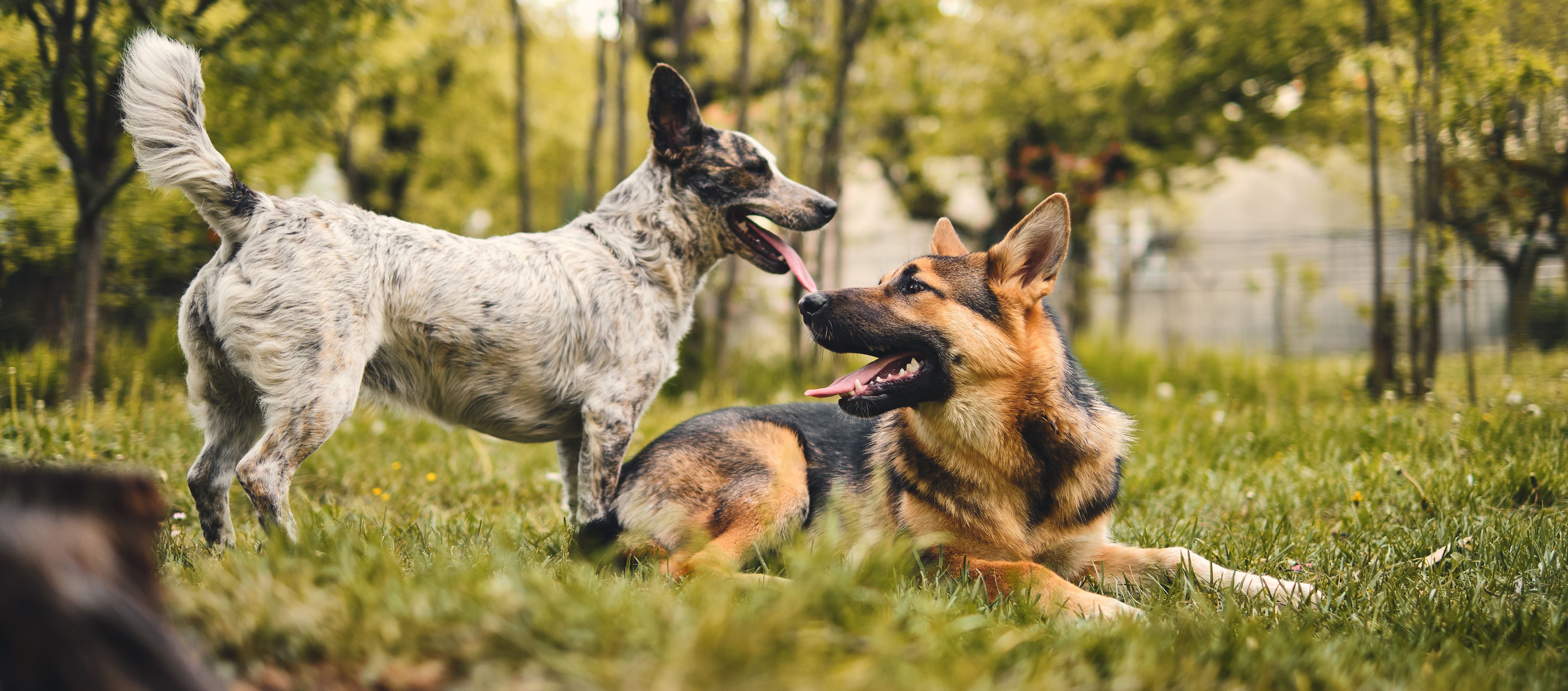Understanding your dog's emotions
 As a pet owner, understanding your dog's emotions is key to ensuring their happiness and well-being. Dogs communicate their feelings through body language, behavior, and vocalizations. Being able to interpret these signals can help you better meet their needs and maintain a strong bond with your furry friend.
As a pet owner, understanding your dog's emotions is key to ensuring their happiness and well-being. Dogs communicate their feelings through body language, behavior, and vocalizations. Being able to interpret these signals can help you better meet their needs and maintain a strong bond with your furry friend.
We sat down with our team of veterinary technicians to break down how to recognize different emotions in dogs — from happiness and sadness to playfulness and fear — by looking at the signs that reveal their state of mind.
How can I tell if my dog is happy?
A happy dog typically shows a combination of relaxed body language and behaviors. Look for signs such as soft eyes, ears in a relaxed position, and an open, "smiling" mouth. A happy dog will also have a loose, wagging tail and enjoy participating in their usual daily activities, such as going for walks or playing. However, it's important to remember that each dog expresses happiness in their own unique way.
How can I tell if my dog is sad?
Sadness in dogs can manifest in several ways. Dogs may become less interested in their usual activities, such as walking or playing, and may show signs of clinginess or lethargy. Changes in appetite and sleep patterns can also indicate sadness. It’s crucial to rule out underlying medical conditions, because some symptoms of sadness can overlap with those of physical ailments, such as chronic pain. Common causes of sadness in dogs include grief, trauma, or significant changes in their environment.
How do I differentiate between playfulness and aggression?
Understanding the difference between playful and aggressive behavior is crucial for ensuring safe interactions with other dogs and people. Signs of playfulness include a relaxed body posture, a playful bow (the dog lowers their front legs while keeping their rear end up), a relaxed, open mouth, and a willingness to take turns during play. In contrast, signs of aggression may include body stiffness, deep growling, showing teeth, and a refusal to stop or take cues from others. Dogs that become overly rough or forceful may be displaying aggressive tendencies rather than playful ones.
How do I know if my dog is scared or uncomfortable?
Dogs may exhibit fear or discomfort due to a variety of reasons, such as loud noises or unfamiliar social situations. Common physical signs of fear include a tucked tail, dilated pupils, avoiding eye contact, trembling, and lip licking or yawning. If your dog shows these signs, it’s important to reassure them or remove them from the stressful environment to help alleviate their fear.
Still have questions about your dog's behavior? Book an appointment with a vet technician through the TELUS Health MyPet app to discuss any concerns and ensure your pet's emotional and physical wellbeing.
